#mihai tepes
Text
if i had a nickle for every time i found a vampire dad from some german kids movie conventionally attractive, i'd have two nickels, which isn't much but it's weird that it happened twice
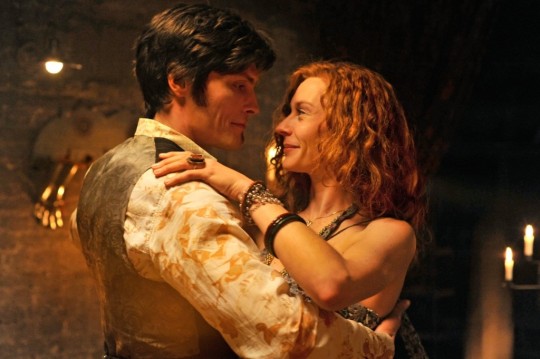
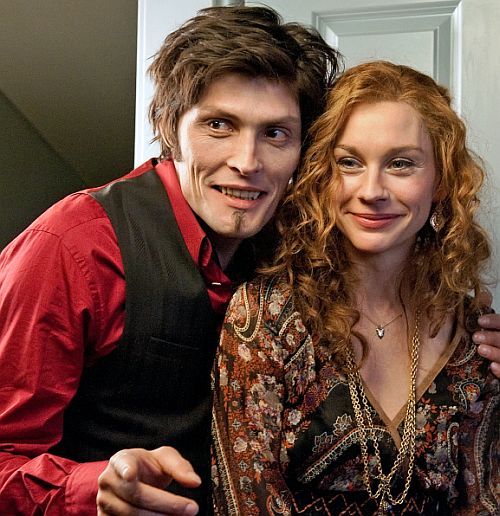

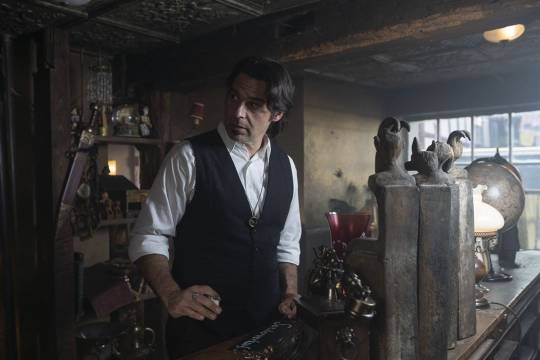
y'all are sleeping on rick kavanian's potrayal of barnabas hello ?? 😶🌫️
#hot vampire dads#rick kavanian#wolf gäng#die vampirschwestern#the vampire sisters#mihai tepes#barnabas#german kids media#movie#y'all are sleeping on them fr#although i did see mihai edits on tt once#nanusposts
27 notes
·
View notes
Text
7/7
FINALLY
#[ a fullmetal heart // edward elric ]#[ a kind soul shielded in armor // alphonse elric ]#[ it's a terrible day for rain // roy mustang ]#[ blissful malevolence // lust ]#[ born from the love of a mother // sloth (2003) ]#[ prince's protector // lan fan ]#[ sent from heaven born from hell // pride ]#[ a bullet in your back to keep you in line // riza hawkeye ]#[ a walking contradiction // van hohenheim ]#[ twin tailed disaster // mitsuba sangu ]#[ can you teach me how to feel real // mikaela hyakuya ]#[ when i rule the world // krul tepes ]#[ who shot that arrow in your throat // yoichi saotome ]#[ the man with two souls // guren ichinose ]#[ born from mud and living to destroy // kabane kusaka ]#[ frozen innocence // akira ]#[ frozen guilt // yui ]#[ an obedient kitsune // kon ]#[ a controlling kitsune // yoko inari ]#[ he who lives in darkness // mihai florescu ]#[ she who spun the golden thread // kumi yamagumonoko ]#[ the tender man of the diamond // alice bloodworth ]#[ the burning queen // hadley bellflower ]#[ the waking waters // azure felmier ]#[ the tip of my tongue running with supreme bliss // tabitha nowell ]#[ an exchanged fate // whitley kingston ]#[ the guardian angel of a ghost // viridian sangere ]#[ now i'm stuck rotting six feet under // annabel winter ]
1 note
·
View note
Audio
Tonight’s episode of my show on Twitch. An amazingly ethereal blend of dub techno and deep minimal electronics mixed furiously by me behind the turntables. Enjoy.
Tracklist
Essentia Sound & Ekodust - River Three
Of Tepe - Untitled IX Pads
Post Apocalyptic - Endless Ocean Of Nostalgia
7mirror - Budapest
Mihai Popoviciu - Fall
lowdi - Almost Enough
Alexander Bogdanov - Listen To Yourself
Moodeep - Digital Nature
Juu Juu - Deep Shadow
Root - Ninmah
BDTom - Floor 33
Baas. - Delirio
Dubtommy - The Other You
Kaesar - Paralio
Drfct - Kocal
Gogan - Past
Dima Bigulaev & G-Day - Night Trip
Quantifiq - Ibiscus (Sakdat Remix)
Map.ache - Love (s.o.s)
Asphalt Layer - Mother Earth
Ikosaeder - Orcinus Orca
Hostox - Eviouse
Boulderhead - Moonstone Energy System
Wet Basement - Space Station
Ivory Tower
#Temisan Adoki#The Temisan Adoki Experience on Twitch#1.20.23#tech house#c!techno#dub techno#minimal#minimal techno#electronic music#electronica#dance music#electronic dance music#dj sets#dj mix#dj set#dj mixes#2023
8 notes
·
View notes
Text
Now that I have made Krypton Krax fairies in yet another (shocker) C:tD!AU the Vampire Sisters themselves and their parents need to be included, too.
Mihai is an unseelie Satyr Baron of the legendary House Danaan, while his wife, Elvira, is a permanently enchanted mortal. The Tepes family frequently reincarnates a multitude of faerie-souls and their deep ties to the Dreaming and rumored past as Lords of Arcadia have earned them great prestige.
Elvira is an artist with all her heartblood; a wellspring of Galmour, which both keeps Mihai's fae side alive whilst also sparing him the worst effects of the "reverse" Mists that those of House Danaan are fated to in the mortal world. Daka and Silvania are Kinain; not fae themselves but rather they are mortals who carry a bit of inherited magic within them.
Daka is more connected to the Dreaming, she has stronger fae-blood and her Satyr heritage is shining through, with small horns and pointed ears. She, too, is aligned with the unseelie fae and has spent as much time in freeholds and the Dreaming as is possible fro a human without succumbing to Bedlam. She, like her father and mother, is part of House Danaan. She's even acquired a title, she's a squire to Aburo, a fairly esteemed Sidhe knight (who in canon is actually one of her old friends from Bistrien).
Silvania is pretty much the only living member of the Tepes dynasty to follow her seelie legacy and she's in love with her childhood friend Bogdan, a Ghille Dhu recently ennobled into House Scathach. Her fairy heritage is less visible in her, atleast on the outside. Silvania holds no title, atleast as of now, though Daka is trying to sway her into joining her so that one day they can both be knights, respected beyond what a Kinain can normally expect. While Silvania enjoys her spacious stay in freeholds, she adores the mundane mortal world just as much, something that Daka (and to an extend even Mihai) will never truly understand.
Magic and other traits:
Mihai:
-Arts: Dream Craft (3), Wayfare (1) and Skycraft (1)
-Realms: Fae (2), Nature (3) and Prop (1)
-Seeming: Grump (30 years in appearance)
-Chimerical disability (left arm missing in Fae Mien)
Daka:
-Arts: Chicanery (1), Legerdemain (1) and Wayfare (1)
-Realms: Fae (2) and Prop (1)
-Inherited Birthright: Physical Prowess
-Seeming: Childling (12 years in appearance)
Silvania:
-Arts: Primal (1)
-Realms: Nature (2) and Fae (1)
-Inherited Birthright: Gift of Pan
-Seeming: Childling (12 years in appearance)
Elvira:
-Bestowments: Animal Speech and Incredible Might
-Largely immortal due to Enchantment and time spent in freeholds
1 note
·
View note
Text
The Iron Maiden of Fagaras Castle
Rocking the modern perceptions of the #MiddleAges, the Iron Maiden found at Fagaras #Castle, #Romania, is a medieval torture device that is real, and yet not. #medieval #history #travelphotography #IB6 #castle
Rocking the modern perceptions of the Middle Ages, the Iron Maiden found at Fagaras Castle, Romania, is a medieval torture device that is real, and yet not.
The stone castle of Făgăraş was first mentioned (that we know of) in 1455, but the initial fortification, built with sturdy fir trees from the nearby forests, goes back to 12th – beginning of the 13th century.
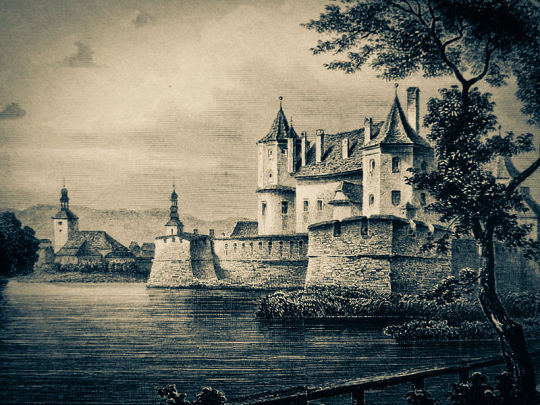
Engraving of the Făgăraș…
View On WordPress
#Almas si Fagaras#castles of Romania#Cettea Mihai Viteazul#Fagaras Castle#Hunyadi si Vlad Tepes#Iron Maiden#medieval torture#stories of the middle ages#thursday doors#violence during middle ages#what is an iro maiden
0 notes
Text
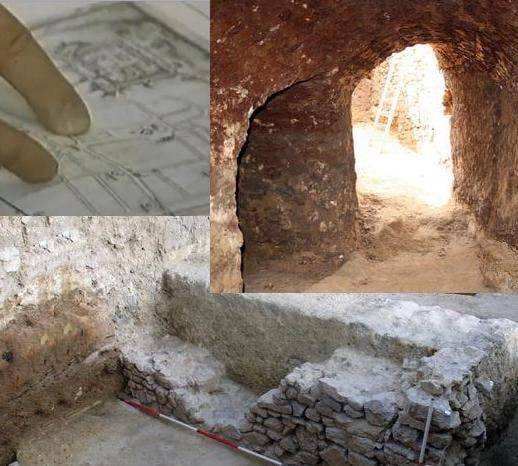


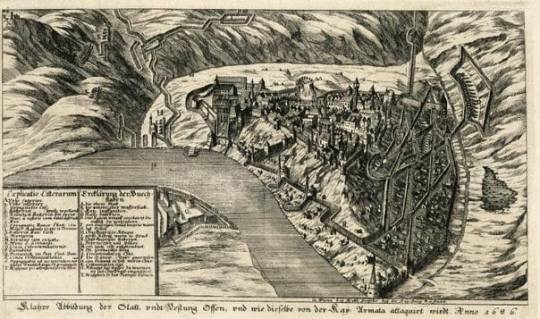
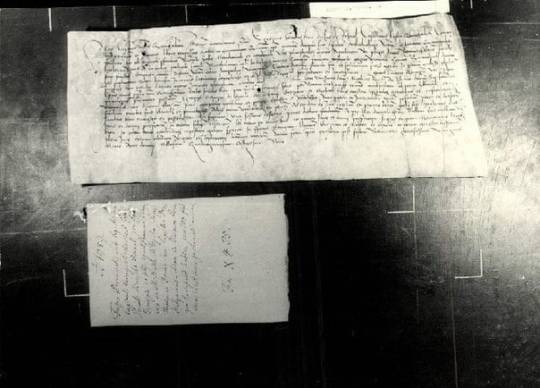
ENG:
DRAGWLYAHAZA " or Vlad Dragulia Tepes in the city of
Pécs with his wife Justina.
What document became the basis of assumptions about who exactly became the Hungarian wife of Vlad Dracula? And why Justina? And not the previously assumed Ilona Silagi (whose documented connection with the voivode Vlad Tepes was not confirmed in any way, being only an assumption until that time).
And the turning point in this issue was the contract of sale of September 10, 1489.
On September 10, 1489, a purchase and sale agreement was signed in Pec for a property located in the city center. The seller was a certain Jacob Kun from Rozsály, a member of the Kun family, the family with the largest land holdings in Satmar and Ugocha. Having become close to the bishop of Pec, Jacob decides to move to the western part of Hungary. This document mentions the Dragwlyahaza house (Casa lui Dragwlya, Draguli house) built by a certain Dragul voivode, Dragwlya. This building was a two-story stone house next to the church of St. Birtalan and bordered on the east with the property of Benedicto Szabo. From the south and west of the house there was a city road, and in the north the house bordered the house of the head of the church of St. Catherine. After the death of the voivode, called Dragwlya, the widow of Justina (Iustina) donated the house to the subject of the voivode Dragwlya (write – famulus), Dionysius. However, this subject of the voivode of Draguli, Dionysius, by coincidence, also became objectionable to King Corvinus, because he was executed by a court and jury for robbery (Maria Roche's article talks about murder, but the translator did not find the words of the murder itself, so...), (the king needed a house in the center). After the execution, the King of Hungary, Corwin and the Bishop of Pec "donated" the house to one of the wealthiest gentlemen , Jacob Kuhn. Jacob Kuhn, who did not need a house, in turn, sells the house for 200 florins ("pro ducentis florenis", the exact amount that the voivode Dragul asked in his letter for the construction of a house, as previously thought, in Sibiu) George of Gyula, his sons John, Grgora and Mihai.
The very nickname of the house , Dragwlyahaza, hints that local citizens associated it with the voivode Dragula. It is impossible to draw many conclusions from this document at once, since neither further research nor excavations have given any more indications of the voivode of Wallachia. However, if this document is original, then it is invaluable in its kind and gives the keys to further search. The name of the Hungarian wife, Justina, the name of a loyal subject, Dionysius, who earned a house with good service, and then did not like the king and was executed for a strange charge of theft and murder for a noble gentleman who owns such an honorable house. And also-200 gold florins . Until now, attempts are being systematically made to determine the exact location of that house in the city center, according to the description in this document. It is also noted that a fairly high price for a house indicates its good location. This house was a corner house, it was part of a number of buildings located near the church destroyed during the Turkish occupation, the Gazi Kasim Pasha mosque was built on that place.
On the city plan of 1689, the engineer Joseph de Guy, depicts a number of buildings in the center of the city, which are divided in two in the center of the city. Archaeologists and historians suggest that this house was located just on the south-western side, on the corner.
Excavations began to be carried out in this part of the city and as a result, ruins of medieval buildings and a basement were found, but no traces or utensils that could even casually indicate the ruler of Wallachia were found.
* The medieval city of Pest was called Quinque Ecclesiae, Five Churches.
The Document:
""We have recorded the testimony of the diocese of the Five Churches (the city of Pec), which was presented to our presence without any compulsion, by a nobleman named Jacob Kuhn from Rozsal, the castellan of the
fortress of the Five Churches (sovr. Pech), and which consists of the following:
His stone house, called the Draguli house and erected in the city of Five Churches (modern Peche), to which, as evidenced, the site of Benedict Zabon adjoins on the east side, on the south and west – public thoroughfares, on the north side – the house of the head of the altar of the Holy Virgin Catherine, erected in the parish church of St. Bartholomew the Apostle, founded in the aforementioned city of Five Churches; the very house and plot of Justina, the widow of the late voivode Draguli, gave, as is known, for eternal use to a certain servant Dionysius for his official services, but later, when this Dionysius was convicted of engaging in robbery and because of this, by the order of the royal majesty, the judge and jury of citizens of this city of Five Churches, as the aforementioned Jacob Kuhn tells, was sentenced by the court to death by hanging, this house and this plot, the king and others, as well as the venerable Mr. Sigismund, bishop of this diocese of our Five Churches, they were transferred to the eternal free privileged possession of the said Jacob Kuhn for his faithful service, having announced the document about the above-mentioned committed crime, Jacob Kuhn sold and transferred for the two hundred florins paid to him in full in pure gold with the eternal and irrevocable right of holding, possession and use, together with all his rights and privileges, with all other benefits, with everything that rightfully belongs here and should relate, with everything, of course, that the aforementioned Jacob Kuhn had previously used and owned, with owning an empty house, located on the south side, and the plot under the house, the glorious George of Gyula, as well as his sons John, Gregory and Michael and all their descendants and heirs, without reserving any right and any possession of the rights of the lord, but completely all the right and all the possession of the rights of the lord, whatever the aforementioned Jacob Kuhn hoped to have in the future in relation to this house, he transferred to the aforementioned George, John, Gregory and Michael of Gyula, as well as to their heirs, which we fully we confirm the right with an effective certificate of the compiled record. Given on the fifth day after the feast of the Nativity of the most glorious Virgin Mary in the year of the Lord one thousand four hundred and eighty-ninth.""
In the appendix to the article:
1. Photo of the document on the sale of the house "Dragwlyahaza",
(Slovak People's Archive).
2. The center of the Oven in 1686 (map details) .
3. Pest and Buda (Matthias Greischer, 1689).
4. Family tree .
5. Excavations.
_______________________
RU
DRAGWLYAHAZA" или Влад Драгуля Цепеш в городе Печ с женой Иустиной.
Какой же документ стал основой предположений о том, кто именно стал венгерской женой Влада Драгули? И почему Иустина? А не ранее предполагаемая Илона Силаги (документально связь которой с воеводой Владом Цепешем никак не подтверждалась, являясь до этого времени лишь предположением).
А переломным документном в этом вопросе стал договор купли продажи от 10 сентября 1489 года.
10 сентября 1489 в Печ был заключен договор купли-продажи на имущество, находящееся в центре города. В качестве продавца выступал некий Якоб Кун (Jacob Kun) из Розсаля (Rozsály), член семейства Кун, семейства с самыми крупными земельными владениями в Сатмар и Угоча. Сблизившись с епископом из Печ, Якоб решает переехать в западную часть Венгрии. В этом документе упоминается дом Dragwlyahaza (Casa lui Dragwlya, дом Драгули) построен неким Драгулей воеводой, Dragwlya. Данное строение представляло собой двухэтажный каменный дом рядом с церковью святого Бирталана и граничило на востоке с имуществом Бенедикто Сабо. С юга и запада дома проходила городская дорога, а на севере дом граничил с домом главы церкви святой Екатерины. После гибели воеводы , именуемого Dragwlya, вдова Иустина (Iustina) пожертвовала дом подданному воеводы Dragwlya (пишут – famulus), Дионисию. Однако, данный подданный воеводы
Драгули, Дионисий, по стечению обстоятельств, также стал неугоден королю Корвину, потому казнен по решению суда и присяжных за разбой (в статье Марии Рошу говорится об убийстве, но слова самого убийства переводчик не нашел, так что...), (дом в центре потребовался королю). После казни король Венгрии, Корвин и епископ Печ «пожертвовали» дом одному из самых состоятельных господ , Якобу Куну. Не нуждавшийся в доме Якоб Кун, в свою очередь, продает дом за 200 флоринов ( «pro ducentis florenis», точная сумма, которую просил в своем письме воевода Драгуля на постройку дома, как ранее считалось, в Сибиу) Георгу из Дьюла, его сыновьям Иоану, Гргоре и Михаю.
Само прозвище дома , Dragwlyahaza, намекает на то, что местные горожане ассоциировали его с воеводой Драгулой. Много выводов из данного документа сразу сделать не получается, поскольку ни исследования дальнейшие, ни раскопки, не дали более никаких указаний на воеводу Валахии. Однако, если данный документ подлинник, то он бесценный в своем роде и дает ключи к дальнейшему поиску. Имя венгерской жены, Юстина, имя верного подданного, Дионисий, что заслужил хорошей службой дом, а после пришелся не по душе королю и был казнен за странное для знатного господина, владеющего столь почетным домом, обвинение в краже и убийстве. А также - 200 золотых флорин . До сих пор систематически предпринимаются попытки точного установления расположения того дома в центре города, согласно описанию в данном документе. Также отмечают, что довольно высокая цена на дом указывает и о его удачном расположении. Этот дом был угловым, являлся частью ряда зданий, расположенных вблизи с разрушенной в ходе турецкой оккупации церковью , на том месте была построена мечеть Гази Касим-паши.
На плане города 1689 года, инженера Жозефа де Гаюи, изображает в центре города ряд зданий, которые делятся надвое в центре города. Археолги и историки предполагают, что как разна юго-западной стороне, на углу и был расположен данный дом.
В этой части города стали проводить раско��ки и в результате были найдены руины средневековых зданий и подвал, но никаких следов или утвари, которые могли бы хоть вскользь указывать на господаря Валахии , не обнаружили.
*Средневековый город Пешт называли Quinque Ecclesiae , Пять Церквей.
Текст договора, переведенный пользователем лингвофорума Georgos Therapon по просьбе администратора сообщества на русский:
"Мы записали свидетельство епархии Пяти церквей (город Печ), которое без какого-либо принуждения представил в нашем присутствие, самолично представ перед нами, знатный человек по имени Якоб Кун из Розсаля, кастелян крепости Пяти церквей (совр. Печ), и которое состоит в следующем:
Свой каменный дом, называемый домом Драгули и возведенный в городе Пяти церквей (совр. Печ), к которому, как свидетельствуют, с восточной стороны примыкает участок Бенедикта Забона, с южной и западной – общественные проезжие улицы, с северной же стороны – дом главы алтаря святой девы Екатерины, воздвигнутого в приходской церкви святого апостола Бартоломея, основанной в упомянутом городе Пяти церквей; тот самый дом и участок Иустина, вдова покойного воеводы Драгули, передала, как известно, в вечное пользование некоему слуге Дионисию за его служебные заслуги, но в последующем, когда этот Дионисий был уличен в занятии разбоем и из-за этого, по повелению королевского величества, судьей и присяжными гражданами этого города Пяти церквей, как рассказывает упомянутый Якоб Кун, был приговорен судом к смерти через повешение, этот дом и этот участок светлейший господин Матияш, король и прочие, а также достопочтенный господин Сигизмунд, епископ этой нашей епархии Пяти церквей, передали в вечное свободное привилегированное владение упомянутому Якобу Куну за его верную службу, огласив документ о вышеупомянутом совершенном преступлении, Якоб Кун за выплаченные ему сполна двести флоринов чистым золотом продал и передал с вечным и неотзывным правом держания, владения и пользования вместе со всеми своими правами и привилегиями, со всеми прочими выгодами, со всем, что по праву сюда относится и должно относиться, со всем тем,
разумеется, чем до этого пользовался и владел вышеупомянутый Якоб Кун, с бывшим у него в открытом владении пустующим домом, находящимся с южной стороны, и участком под домом, славным Георгию из Дьюла, а также его сыновьям Иоанну, Григорию и Михаилу и всем их потомкам и наследникам, не оставив за собой никакого права и никакого обладания правами господина, но полностью все право и все обладание правами господина, какие бы ни надеялся иметь в последующем по отношению к этому дому вышеупомянутый Якоб Кун, он перенес на вышеупомянутых Георгия, Иоанна, Григория и Михаила из Дьюла, а также на их наследников, что мы с полным правом подтверждаем действенным свидетельством составленной записи. Дано в пятый день после праздника Рождества славнейшей Девы Марии в год Господень тысяча четыреста восемьдесят девятый".
В приложении к статье:
1.Фото документа о продаже дома "Dragwlyahaza" ,
(Словацкий Народный Архив ).
2.Центр Печ в 1686 (детали карты) .
3. Пешт и Буда (Матьяш Грайшер, 1689).
4. Семейное дерево .
5. Раскопки.
___________________
Document original in Latin:
“Nos capitulum ecclesie Quinqueecclesiensis memorie commendamus, quod egregius Iacobus Kwndictus de Rosaal castellanus castri Quinqueecclesiensis coram nobis personaliter constitutus libereconfessus extitit in hunc modum: quomodo ipse quandam domum suam lapideam, Dragwlyahaza vocatam in civitate Quinqueecclesiensi fundatam, cui ab orientali fundus Benedicti Zabo, meridionali et occidentali vie plaustrales communes, aquilonari vero plagis domus rectoratusaltaris Sancte Katherine virginis in ecclesia parochiali Sancti Bartholomei apostoli in dictacivitate Quinqueecclesiensi fundata constructi contigue vicinari asseruntur, quam quidem domum sive fundum generosa domina Iustina relicta condam Dragwlya waywode cuidam Dionisio famulosuo ob servitiorum suorum merita in perpetuum contulisse perhibetur, sed postmodum eodem Dionisio in crimine latrocinii deprehenso et ob id iussu regie maiestatis per iudicem et iuratos cives huius civitatis Quinqueecclesiensis, uti idem Iacobus Kwn retulit, laqueo mortis iuridice condempnato eandem dom[um sive fun]dum idem serenissimus dominus Mathias rex etc. acreverendus dominus Sigismundus episcopus huius ecclesie nostre Quinqueecclesiensis dicto Iacobo Kwn pro fidelibus servitiis suis per notam dicti commisso criminis manifestam sub certis libertatibus et privilegiis contulisset perhenniter possidendam egregiis Georgio de Gywla ac Iohanni, Gregorio et Michaeli filiis eiusdem ipsorumque heredibus et posteritatibus universis pro ducentis florenis auri puri iam plene persolutis et perceptis dedisset et vendidisset iure perpetuo et irrevocabiliter tenendam possidendam pariter et habendam simul cum cunctis suis libertatibus et privilegiis, aliis etiam utilitatibus et pertinentiis ad eandem de iure spectantibus et pertinere debentibus, quibus scilicet hactenus dictus Iacobus Kwn tenuisset et possedisset, et signanter una sessione deserta penes dictum fundum curie a parte meridionali habitam [habita], nullum ius nullamve iuris et dominii proprietatem in eadem sibipsi reservando, sed totum et omne ius ac omnem iuris et dominii proprietatem, si quod et quam memoratus Iacobus Kwn in eadem domo qualitercumque imposterum habere speraret, in prefatos Georgium, Iohannem, Gregorium et Michaelem de Gywlaac eorum heredes transferens pleno iure harum nostrarum vigore et testimonio literarum mediante. Datum feria quinta proxima post festum nativitatis gloriosissime virginis Marie anno Dominimillesimo quadringentesimo octogesimo nono.”
#Vlad voda#Vlad Tepes#Vlad Dracula#vlad the impaler#Ladislau Dragkwlya#history#wallachia#romania#vlad dracula tepes#article#russian#DRAGWLYAHAZA#Pécs#Vlad and Justina
16 notes
·
View notes
Note
Dracula x wifey ft. 4 babies +Adrian family headcanons or scenario if you want. I'm new here!! Really love your blog please keep it up 🙏🏻😘✨😍
(We weren’t sure if anon meant wifey s/o or Lisa…so I went with Lisa. When we reopen the ask box you can resubmit for reader/wife s/o headcanons if that’s what you meant)
If asked, Dracula would say Lisa accumulated children. That wasn’t an inaccurate assessment of how the Tepes family grew.
She’d been pregnant with Adrian shortly after their “marriage”. Roughly six years later she attended a birth in the village that ended tragically in the mother’s death. The father had gone to throw the infant into the river to which Lisa responded by threatening him at knife point and taking the baby home. Drac knew better than to argue with her and went about crafting a new cradle for baby Petru.
Six months later it was a pair of twins dropped at their doorstep, found by Adrian (effectively a young teen thanks to his lineage by that point) who had begrudgingly taken them inside to care for them until his parents returned that evening. There had been a brief family meeting over it, Petru snoozing in his crib nearby. Vlad was concerned over so many very young humans in the house, especially considering they tried to keep a relatively low profile. Eventually when Vlad had noticed the twins had fallen asleep in his arms he’d given in to his wife’s adoring stare. She even let him name them, Marieta and Jeanne.
The low profile approach in the cottage was promptly tossed when Lisa had come across an abandoned bundle on the side of the road as he returned home just before dawn. She’d nearly walked on by but then a few rays of sun started to peak over the horizon and she heard the bundle start to wail. In a flurry she’d tucked them into the shade of her cloak, eyeing the tiny fangs peeking behind their lips. She’d taken them home and tucked them into the crib with the other three. Needless to say she was woken up a few hours later to Adrian shrieking to see the babies had multiplied overnight. Little Mihai was the final straw that let Drac convince Lisa they stop living in a house so close to people and return to a much more secluded location in his castle.
In seclusion, the Tepes family was raised with tender care accompanied by education as soon as they could start to babble. Adrian had not so subtly suggested that maybe Vlad could pick a better bedtime story for the babes than an almanac related to star positions.
Feeding time is a bit of a hassle, even with three available sets of arms there’s one baby too many. Not to mention the cleaning… Drac is quick to invent something to help with that.
When they start to babble Lisa is already teaching them, looking more like a schoolmarm than a mom. Adrian takes the time to help Mihai, who ages faster than the others, to teach him how to handle his strength, his hunger, and gradually his powers. Though Vlad quickly takes over that once they nearly lose all four younglings, Mihai having flown them up to the rafters to avoid bath time.
They love watching Vlad train with Adrian, their swordplay and martial skills earning delighted ooh and aahs from the tiny audience. Jeanne earns a particularly soft spot in Vlad’s heart when she waddles over to him after Adrian lands a very solid blow on his chest. She crawls onto him and kisses his cheek, insisting he’s all better. The rest of the group scurrys over as well when their father starts to tear up.
-Mod Soviet
#mod soviet#vlad dracula tepes#adrian tepes#lisa tepes#family fun times#babies babies everywhere#Anonymous#gen#imagines#Castlevania
168 notes
·
View notes
Note
Hola~ Unas preguntas para Mihai: ¿Cuál es tu comida favorita? ¿Qué te gusta hacer en tu tiempo libre? ¿Hay algo que te de miedo?
—Ninguna en particular, mientras tenga un sabor fuerte, idealmente picante, me conformo. —Sonrió como si pensara en algo agradable antes de volver a las respuestas—. ¿Mi tiempo libre? —rio nervioso—, malgastar… ¡Invertir!, invertir el dinero en comodidades necesarias para mantener un estado mental apropiado para el trabajo —suspiró—, ojalá haya tragos baratos cerca del hotel… Ah, sí, las preguntas. —Sacudió la cabeza—. ¿Algo que me de miedo?, ¿a estas alturas…? —se llevó un dedo a la cicatriz—, supongo que tener una de éstas en un ojo, ¿te imaginas sangrar cada vez que parpadeas? —Soltó una carcajada—. No, pero, hablando en serio, ¿has oído hablar de Vlad Tepes?, es una oscura leyenda sobre mi tierra natal. Bueno, las historias son reales, creo que si su espíritu regresara de alguna forma, dudaría un muchísimo sobre si volver a Valaquia o no… —Cuando dejó de hablar, se quedó pensando profundamente.
1 note
·
View note
Note
Oh, I've never heard that Romania had a King. That's interesting...I hope he did so well in his life. By the way, that made me imagine Asgore as Your King! Heh my imagination...
AWWWW! WE’D LOVE THAT! ;w;
From what my mom has told me, yes! He had a long, prosper and beautiful life, alongside his family and his beloved wife who passed away last year. It’s hard to imagine how it is to live in an exile for a long time but I’m very glad that both his citizenship and confiscated properties got restored as soon as he visited our country, in 1997. For some reason I simply don’t understand how he’s gotten so much hatred from the half of us, like as if any monarchy never mattered to them. Poor him, he may rest in peace! :I
But that’s not all! We’ve also had more rulers in the past. Decebal, Mihai Viteazul, Vlad Tepes etc.
And we had previous Kings too before the beginning of communism: https://en.wikipedia.org/wiki/List_of_heads_of_state_of_Romania
26 notes
·
View notes
Text
Vlad Ţepeş, unul dintre cele mai CONTROVERSATE personaje din istoria Românilor
Erou national pentru romani, vampir sangeros pentru celelalte popoare, Vlad Tepes este, cu siguranta, unul dintre cele mai controversate personaje ale istoriei. Imaginea lui Vlad Tepes este atat de mult invaluita in mister incat, astazi, nimeni nu mai poate spune exact unde se termina legeda si unde incepe istoria.
Citeşte şi Dintr-o greşeală, americanii au fost pe punctul de a declanşa un război nuclear împotriva sovieticilor. ”Da, jumătate din Soare tocmai a explodat!”
Citeşte şi Sfaturile de acum 100 de ani pe care tinerii căsătoriţi le primeau înainte de noaptea nunţii. Ce trebuia să ştie o soţie ”credincioasă şi castă” şi de ce bărbaţilor le era interzis ”să exagereze”
Dracula – nasterea unui mit
Fiu al lui Vlad al II-lea Dracul, guvernatorul Transilvaniei din ordinul regelui ungar Sigismund, si nepot al marelui voievod roman Mircea cel Batran, Vlad al III-lea Tepes se naste in 1431 in fortareata Sighisoarei.
Crescut sub ocrotirea parintilor pana la varsta de 11 ani, tanarul print este luat ostatic impreuna cu fratele sau mai mic Radu de catre sultanul Murad al II-lea, ca semn al obedientei tatalui sau, ajuns principe al Valahiei.
El nu va fi eliberat decat sase ani mai tarziu, odata cu asasinarea lui Vlad Dracul, moment in care si fratele sau mai mare, Mircea al II-lea, este torturat si ingropat de viu de catre boierii munteni.
Cum in Tarile Romane ereditatea nu reprezenta un factor hotarator pentru alegerea urmatorului voievod, acesta fiind numit prin bunavointa majoritatii nobililor, Vlad Tepes porneste, in 1448, in fruntea unei armate turcesti pentru a cuceri tronul Valahiei.
Invins intr-o prima batalie, Vlad va deveni domnitor de abia in 1456, an in care, dominat de dorinta de a-si razbuna tatal si fratele, va incepe una dintre cele mai controversate domnii din istorie.
Respectat si temut de catre popor, tanarul voievod se va impune ca un aprig luptator impotriva turcilor dar si ca unul dintre cei mai cruzi monarhi nascuti vreodata.
Citeşte aici continuarea!
Descoperă îţi prezintă principalele semnificaţii istorice ale zilei de 22 august:
1233 – Prima menţiune documentară a unui “ban de Severin”, în persoana lui Luca
1599 – A încetat din viaţă compozitorul italian Luca Marenzio, a fost extrem de admirat ca autor de madrigaluri, fiind supranumit compozitorul divin. (n. 1553)
1647 – S-a născut fizicianul Denis Papin; a inventat cazanul cu abur (1679) şi a proiectat motorul cu abur (1690).(m. 1712)
1860 – S-a născut inginerul Paul Gottlieb Nipkow, unul dintre părinţii televiziunii (m. 24 august 1940)
1862 – S-a născut compozitorul Claude Debussy, considerat a fi cel mai important compozitor de pian, de după Frederic Chopin. (m. 25 martie 1918)
1883 – A încetat din viaţă scriitorul Ivan Sergheevici Turgheniev, autorul operelor “Un cuib de nobili” şi “Fum” (n. 28 octombrie /9 noiembrie 1818)
1890 – A încetat din viaţă scriitorul Vasile Alecsandri, redactor şi proprietar al revistei “România literară”, membru fondator şi membru de onoare al Academiei Române; a publicat prima culegere de poezie populară românească. (n. 21 iulie 1821).
1892 – S-a născut astronomul Victor Daimaca; a descoperit, la 3 septembrie 1943, o cometă omologată de Uniunea Astronomică Internaţională, pe care a numit-o “Cometa Daimaca” (m. 20 mai 1969)
1902 – S-a născut Leni Riefenstahl, una dintre cele mai controversate personalităţi feminine ale secolului XX, dansatoare, actriţă, regizoare de film (m. 8 septembrie 2003)
1904 – S-a născut sculptorul român Gheorghe D. Anghel, autorul bustului lui Mihai Eminescu aşezat în faţa Ateneului (m. 7 aprilie 1966)
1904 – S-a născut fostul lider chinez Deng Xiaoping, creditat cu faptul că a adus China mai aproape de capitalism şi a determinat peste trei decenii de creştere foarte rapidă în economie (m. 19 februarie 1997).
1908 – S-a născut fotograful şi pictorul Henri Cartier-Bresson, a cutreierat întreaga lume şi a fost primul fotograf „capitalist” acceptat să fotografieze liber în Blocul Sovietic (m. 3 august 2004)
1917 – A murit Ecaterina Teodoroiu; participând voluntar la Primul Război Mondial, s-a remarcat în luptele de pe Jiu, a căzut eroic în fruntea plutonului pe care-l comanda ca sublocotenent. (n. 14 ianuarie 1894)
1917 – S-a născut legenda blues-ului John Lee Hooker, solist vocal şi instrumentist, cu peste o sută de albume înregistrate, câştigător al Premiilor Grammy. (m. 21 iunie 2001)
1958 – A încetat din viaţă scriitorul francez Roger Martin du Gard, laureat al Premiului Nobel pentru literatură în anul 1937 (n. 23 martie 1881).
1972 – A încetat din viaţă fizicianul Ştefan Procopiu, cercetător în domeniul magnetismului, membru al Academiei Române. A descoperit „Efectul Procopiu” de depolarizare a luminii. (n. 19 ianuarie 1890)
1981 – A încetat din viaţă poetul avangardist Saşa Pană (pseudonimul lui Alexandru Binder), autorul operelor “Călătorie cu funicularul” şi “Culoarea timpului” (n. 8 august 1902).
1985 – A încetat din viaţă actorul de teatru şi film, din generaţia de aur, Octavian Cotescu. A jucat în numeroase filme precum „Secretul lui Bachus” , „Buletin de Bucureşti”, „Eu, tu şi Ovidiu”. (n. 14 februarie 1931).
1994 – A încetat din viaţă pictorul Vespasian Lungu ( n. 21 iulie 1927).
1999 – A încetat din viaţă dramaturgul, publicistul şi scenaristul Tudor Popescu, autorul pieselor “Satana cel Bun şi drept” şi “O dragoste nebună, nebună, nebună” (n. 8 septembrie 1930)
2002 – A încetat din viaţă scriitorul şi publicistul elveţian de origine română Horia Liman; a fost distins cu premiul internaţional „Friedrich Schiller ”, în anul 1993, pentru două din romanele sale în limba franceză „ L’ echeance ”şi „ Les Bottes ”
2010 – A încetat din viaţă boxerul Gheorghe Fiat, medaliat cu bronz la Jocurile Olimpice din 1952, de la Helsinki (n. 1929)
2010 – A încetat din viaţă nutriţionistul francez Michel Montignac, autorul celebrei cure de slăbire care îi poartă numele şi pe care a pus-o la punct în anii 1980 (n. 1944).
Articolul Vlad Ţepeş, unul dintre cele mai CONTROVERSATE personaje din istoria Românilor apare prima dată în Descopera.ro.
0 notes
Text
20 Sights of Romania
New Post has been published on https://tripsterguru.com/20-sights-of-romania/
20 Sights of Romania

Romania is a beautiful country with its own amazing and magical world, with beautiful and picturesque places, a number of attractions that are worth seeing and which are very popular among tourists from all over the world. It attracts with its ancient culture and beautiful nature. Any tourist will find a lot of interesting things for themselves: beautiful views of the Black Sea, Carpathian mountains, clean air, beautiful mountain springs, indescribable beauty, the famous Danube River, historical architectural structures. The sights of Romania can be found anywhere in the country. Each of them has its own story, and even legend. Many of them are nature reserves.
Peles Castle

On the way from Transylvania to Wallachia, on the orders of King Carol I, the Peles Palace was built, which is usually called a castle. It is 135 km from Bucharest. Its construction began on August 22, 1873 under the leadership of the German architect Johann Schulz. It was originally intended as the summer residence of the king and the place of hunting. The central entrance is decorated with a sculpture of King Karol I, who considered his palace to be the “cradle of the dynasty, the cradle of the nation.”
It was here that two Romanian kings were born: Carol II (in 1893) and Mihai (in 1921). The sculpture of his wife Elizabeth, depicted behind embroidery, is located in a secluded corner of the garden. The 3200 m² castle was designed in the Neo-Renaissance style. This building was the first castle in the world to receive electricity. For this, a power station was built on the territory. There are stables, houses for protection and hunting. The tower, 66 meters high, was crowned with a clock.
The interiors are decorated in baroque style. In total, the castle is equipped with 160 rooms, 30 bathrooms, a theater for 60 spectators. An elevator and an air-conditioning system with the help of sliding ceiling windows were built here. Workers from different countries worked on the construction of the castle. According to the estimates of Queen Elizabeth, they spoke 14 languages. In 1947, King Mihai was forced to abdicate, and the castle was confiscated. It hosted tourists, and then in 1958 a museum was created.
During the reign of N. Ceausescu, the castle was under guard, access to it was stopped. The resumption of the museum was short-lived. In 2006, he was returned to the rightful owner of the Romanian king Mihai. The government paid him 30 million euros, and the castle again became available for visits. At present, the castle houses the Historical Museum, the collection of which includes paintings and sculptures from Eastern and Central Europe, silver, gold, ivory, Sevres and Meissen porcelain.
The collected collection of medieval weapons and armor is amazing. There are more than 4000 exhibits in it. Carpets to decorate the interiors of the castle were woven in Bucharest, Mosul, Isparta and Smyrna. Leather goods delivered from Spain (Cordoba). Hand-painted stained-glass windows were brought from Switzerland. The park ensemble consists of seven terraces built in the Italian style. They are decorated with a large number of figures made of Carrara marble by the Italian sculptor Raffaello Romanelli, fountains, stairs. Open for tourists from 9 to 17 hours (Wednesday — Sunday). It does not work in November. It can be visited as part of an excursion group, they gather on the basis of the linguistic principle.
Bran Castle

Built at the end of the 14th century, it was intended for defense and the inhabitants themselves built it. It is located on a cliff 30 km from the city of Brasov and covers an area of 8 hectares. Inside, it has a complex staircase system that allows you to move between four levels. There is a well in the courtyard, which, according to legend, leads to underground rooms. For the construction of this defense fortress, local residents were exempted from paying taxes to the treasury for several centuries. During its existence, the fortress has repeatedly changed owners. But it was called Dracula’s castle, as the lord Vlad Tepes spent the night there during the campaigns and favorite hunting.
There is a legend that Turkish conquerors tortured him in the cellars of the castle. In 1918, the townspeople gave the castle to the Romanian Queen Mary. From that moment, it began to be used as a royal residence. In 1920–26, a grand restoration was carried out, during which a park with fountains, alleys and a private lake spread out on the estate. In 1948, the royal family left the palace; it came to desolation. But already in 1956, the Museum of History and Feudal Art opened at its base.
In 2006, a law was passed in Romania on the return of property to former owners, and the castle was returned to the heirs of the queen. But before that they took out all the historical furniture. Therefore, her grandson Dominique had to re-create the interiors and buy the appropriate environment. Local shops are happy to sell souvenirs related to Count Dracula. In addition, Bran is famous for local cheeses, the recipes of which are transmitted from generation to generation in great secret. Bran is a success with filmmakers around the world. So in 1994, the film “Interview with the Vampire”, shot on the territory of the fortress, was released.
Corvin Castle

Located near the city of Hunedoara, it was presented for outstanding services by the Hungarian King Sigismund to the Romanian military and political figure Janos Hunyadi. He decided to rebuild it and make it a family estate. The restoration was carried out in two stages. During the years 1441-1446, seven towers were erected, in 1446-1453 – a chapel, halls and utility rooms in the southern wing. The heir to the castle was Janos’s son – Matyash Corvin, who continued construction work in the chapel and in the north wing.
The architectural style of the castle includes Gothic elements in combination with fragments of the Quattrocento (early Renaissance). According to legend, the Transylvanian count Vlad Tepes was kept in the dungeons of the castle for seven years after the overthrow. Since 1508, the castle changed owners several times until it was in the hands of Gabor Betlen, who led the anti-Habsburg movement in the Hungarian kingdom. He reconstructed it in the light of the latest fortification requirements.
But in the 18th century, the Habsburgs still began to own it. With them, in 1854, a fire broke out in the castle, destroying the internal wooden finish. During the years 1868-74, reconstruction was carried out here, as a result of which the roof was tiled. During the communist rule, the castle was also reconstructed and opened to visitors.
Poenari

It is located in Arefu (rum. Arefu), a few kilometers from Lake Vidraru. Presumably it was built by Rada Negra, nicknamed the Black Governor. This is the semi-legendary founder of the Vlach state. At that time there was only one tower and a small garrison of guards. In the XV century it belonged to the famous gospodar Vlad Tepes, who did a lot to strengthen it.
He built four more towers, expanded the castle buildings. Traditions say that it was in him that Dracula tortured his opponents. After his death, the area began to fall into disrepair, which aggravated the earthquake in 1888. The last restoration work was carried out in 1972. At this time, they strengthened the masonry walls and built walkways with railings for the convenience of tourists.
Archaeological excavations have confirmed that the fortress in the bed of the Arges river has existed since time immemorial. She allowed to control the territory between Transylvania and Wallachia. To get to the ruins, it is necessary to overcome the 1480 stairs steep stairs leading to the mountaintop Cetatuia. On it is a platform from which, according to legend, the wife of Count Tepes, Elena, rushed into the gorge.
Romanian Athenaeum

In 1865, the Atheneum Society was founded in Romania, and in 1888, the construction of the building began with the funds of the Wallachian boyar clan Wakarescu. In addition, folk money collected under the motto “Donate one leu to the Athenaeum!” Was also used for its construction. This is a concert hall located in the capital of Bucharest. The author of the project was the French architect Albert Galleron. It is built in neoclassical style with romantic elements.
On the ground floor there is a meeting room, and on the second floor there is a visual for 600 seats (52 additional seats are located in the boxes). The interior of the auditorium is decorated with a fresco by the artist Kostin Petrescu depicting significant events in Romanian history. The painting was carried out for 6 years, starting in 1933. On April 22, 1939, a concert was given in honor of the construction of a concert organ.
Performed organ music by Franz Schutz, director of the Vienna Academy of Music and Performing Arts. In front of the Atheneum building there is a small park with a monument to the classic of Romanian poetry, Mihai Eminescu. Currently, the concert hall is considered a symbol of Romanian culture and is listed on the European Cultural Heritage.
Rasnov Fortress
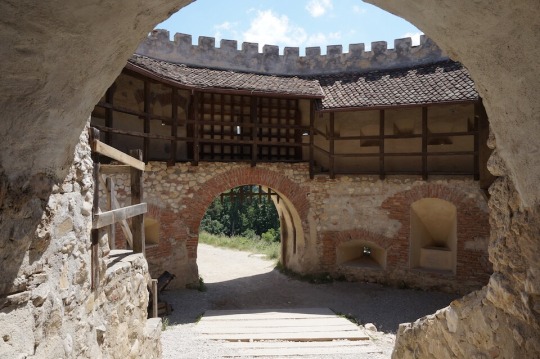
The fortress in the city of Rasnov was founded by the Teutonic Knights in 1215. It served to shelter the local population from numerous conquerors and was so fortified that it was conquered the only time in 1612 by the Transylvanian prince Gabriel Bathory. In the center is a well. A terrible legend is associated with it. During the siege by the Ottomans, the inhabitants lacked drinking water. Then they forced to dig two captured Turks another well with a depth of 62 meters.
They were promised freedom, but at the end of their work, which lasted seventeen years, the captives were killed. During restoration work, two human skeletons were actually discovered at the bottom of the well. Currently, the territory is freely visited by tourists. The fortress wall with towers and the foundation of the church remained from the fortress. A panoramic view of a two-story city and beautiful surroundings opens from the observation deck. From here you can also see Bran Castle.
Fun cemetery

The original cemetery is located in the village of Sepynets in the Maramuresh County. His tombstones are made in bright colors and have original inscriptions in poetic form. They reflect the life path of the buried villagers. This idea of the cemetery belongs to Stan Jon Patrash, a local wood carver. He was the first in 1935 to carve and erect a cross with a cheerful inscription. Over the years, more than 800 such crosses have been installed on the graveyard, and it itself has turned into a museum that tourists like to place. There is an inscription on the grave of the camp itself. It says: “In my entire life I have not done harm to anyone …”.
Mud Volcanoes

The Vulcanii Noroiosi Nature Reserve was created in the 1920s near the town of Buzau, located about 100 km from Bucharest. They arose on the territory of an abandoned mine. In 1977, an earthquake occurred in Romania, and the special activity of volcanoes began to appear. As a result of the exhaust gases, dirt and salt water are emitted to the surface. They freeze under the sun and form peaks resembling craters.
Currently, four such volcanoes are constantly operating, and twelve – periodically. Originality is given to the couple by the green hills surrounding the reserve. Between the craters are frozen flows. Their cracks on the surface of clay soil reach 5 cm. You can freely enter the territory of the reserve and spend several days in a tent camp or as part of an excursion group.
Scarisoara Cave

The Bihor Mountains are 134 kilometers from the city of Cluj-Napoca. They discovered a cave 1 km long, which was formed about 3,500 years ago as a result of glaciation. Scarisoara was first mentioned in 1863. Then the Austrian geographer Arnold Schmidl drew her map. In a grotto located in the mountains underground, a glacier is discovered, which gradually disappears as a result of melting. Stalagmites found in the halls resemble church candles.
Therefore, the cave is conditionally divided into halls called the Great Hall, Church, and Cathedral. Currently, the cave is equipped with metal and wooden stairs, which allows you to freely visit it. It is illuminated inside with carbide lamps. Some part of the cave is being studied by scientists. The temperature inside the grotto approaches zero. Therefore, when visiting attractions, you need to bring warm clothes.
Pelishor Castle

This is a small part of the Pelish complex, built in 1899-1903. It was intended as the summer residence of the heir to the Romanian throne, Ferdinand. The author of the Art Nouveau castle was the Czech architect Karel Liman. In the design of the castle, direct participation belongs to the wife of Ferdinand Princess Mary, who had a very delicate taste. She managed to successfully combine elements of the Art Nouveau style with Byzantine and Celtic symbols.
The castle has 99 rooms. They are decorated with furniture designed by Viennese designer Bernard Ludwig. In addition, the interiors were developed by him together with Queen Mary. Therefore, they have a special sophistication. In order to have a lot of light in the castle, the large windows and ceiling of the Main Hall are three floors high, decorated with stained glass windows. It is decorated with oak panels and decorated with portraits of the owners of the castle and their children.
Drimsim is the first universal sim card for travelers. Internet abroad starts at $ 1 per megabyte, and calls start at $ 3 per minute. Works in 197 countries!
Maria herself designed the furniture designs for the Golden Bedroom. It was made in 1909 in the workshop of the city of Sinai. In the Queen’s office is furniture with lilies and a Celtic cross – the symbols of the princess from Scotland. The cabinet of King Ferdinand opposite is sustained in strict German neo-Renaissance. The castle has a unique collection of works by contemporary masters of art nouveau, including designers Halle, brothers Daum, Hoffman, Tiffany, Gursner.
Sucevita Monastery
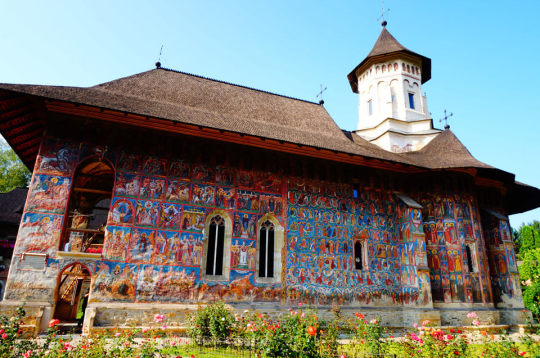
It is located in Bukovina, in the north-eastern part of the country. The nearest town of Radauti is 18 kilometers away. In 1585, it was built by brothers from the Wallachian clan Tomb of Jeremiah and Simon. The square-shaped monastery is surrounded by six-meter walls. To strengthen the corners of the tower built. In its architecture there are both Byzantine elements and Gothic. The structure inside and outside is completely covered with unique murals based on the Old and New Testaments.
They are made by Moldovan masters brothers Ion and Sofroniy with the help of a huge number of unknown masters. The unique internal painting serves the idea of spiritual renewal of a person through faith and pious deeds. In 2010, the monastery was inscribed on the World Heritage List. Currently, one of the walls is used for the museum, which houses a large exhibition of historical objects.
Mogoshoyaya Palace
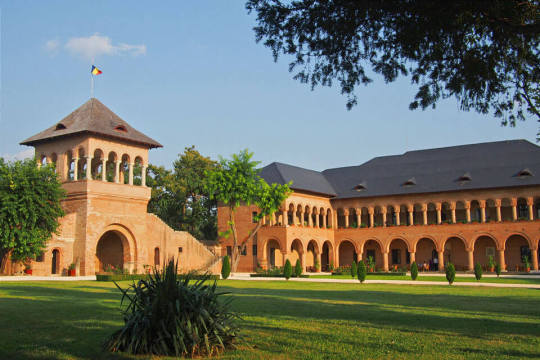
In 1698-1702, the Wallachian ruler Konstantin Brynkovyanu built a palace and park complex 16 km from Bucharest as the summer residence of his family. Constantine was the founder of a national architectural style that combined Venetian, Dalmatian and Ottoman elements. It contains numerous carved jewelry and decorative paintings. In 1714, the Ottomans executed Brynkovyan, and arranged a hotel in his palace.
Having recaptured it during the Russian-Turkish war, in 1853 the Russians arranged storage facilities for weapons in it. The princes Bibescu, who became the new owners of the palace complex, began its restoration in 1860-1880. They managed to recreate and decorate the palace, which they owned until the Second World War. In the 1920s, it belonged to the widow Marta Bibescu, who put a lot of effort into his restoration and opened a salon in it.
Its visitors were many famous people of the first half of the XX century, including Antoine Saint-Exupery. It was her name that began to be worn by the palace and park ensemble. Representatives of the princely family of Bibescu found reassurance in the church of the park. Despite significant restructuring of the 20th century, the palace has inherent basic elements of the national style. In 1957, the Museum of Brynkovets Art was opened here, including antique furniture and household items of the 17th-19th centuries, historical documents, icons and works of art.
Throne fortress
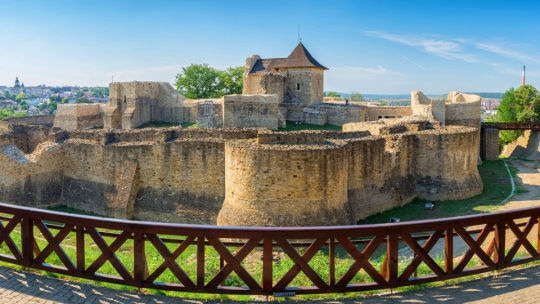
The fortress of the XIV century served as the place of coronation of Moldavian rulers. Located in the city of Suceava, it is currently a ruin. Restoration of the remains of the once powerful fortress began in 1961 and is still ongoing. The almost square fortress 40×36 meters had square towers. A water moat was dug around her. Its depth reached 10 meters. The fortress was founded by Peter I Mushat, but the greatest importance was under Stephen III the Great (Stefan cel Mare).
He strengthened two-meter walls of solid stone, built an additional defense system of walls 10 meters high, which was carried out 20-25 meters ahead. Inside, additional halls were built for members of his family. Its siege by the Ottoman forces was unsuccessful until in 1563 the self-proclaimed lord Stefan VII Tomsha took refuge in it. The mercenaries betrayed him and surrendered the stronghold to the Turks. After that, she was burned, passed from the hands of the proteges of the Turkish Sultan.
In 1675, by order of Dumitras Kantakuzin, she was blown up. Remains destroyed by an earthquake. The revival of the fortress began after archaeological research by the Austrian architect Karl Romstorfer at the beginning of the 20th century. But reconstruction began only in the 60s. Currently, the remains of the fortress can be visited for a fee.
Nyametsky fortress

During the reign of Peter I Mushat, the Nyametskaya fortress was also built. It is located near the city of Tirgu Neamt. Legends say that the Teutonic Knights first strengthened this place. They appropriated large territories in Transylvania and colonized Semigradier. The name Tirgu-Neamt is translated as “German bargaining.” Stefan the Great, preparing for the fight against the Turks, was engaged in strengthening the ring of fortresses, including Nyametskaya.
On his orders, its walls were increased by 20 meters in height and an outer courtyard was built, where artillery pieces were installed. A huge bridge was thrown across the moat, reminiscent of a Roman aqueduct and bridges of the 20th century at the same time. A well was dug in the yard to supply drinking water in case of siege. But neither the Ottomans nor the Polish commander Jan Sobesski could take her.
The Turks fell into the fortress only thanks to the conquest of Moldova, but did not begin to destroy. Left as an observation post. Currently, a small museum exposition is operating in the fortress. It presents household items of the defenders of the citadel. In 2007–09, reconstruction began. Thanks to her, a reliable road appeared for tourists placing this place, the infrastructure was improved, the architecture was updated.
Canyon Bicaz

In the Eastern Carpathians are rocks of the Bikaz gorge. It stretched between Moldova and Transylvania, and served as the only natural road. Bicaz is the deepest and longest gorge on the territory of Romania, the river of the same name shares its banks. Currently, it is a conservation area with almost sheer cliffs above an 8-km-long highway.
Taking pictures is allowed in certain areas. People driving along the highway are delighted with the surrounding beauty of nature. In 1961, a hydroelectric dam with a reservoir was built at the exit of the gorge. It is recognized as the largest Romanian lake. River trout is found in the waters of the Bikaz River, and red-winged sten climbers, considered rare birds, live on the rocks.
Ceahlau

One of the most famous mountain ranges is located in the Eastern Carpathians. It is located near Spring Lake Mountain in Neamt County. The highest points are Toaka (1904 m) and Okolashul-Mare (1907 m). The massif is surrounded by the Bistrita and Bikaz rivers, in the east – Lake Bikaz. In the national park is the monastery “Transfiguration”, and Mount Chahlau recognized as the second Christian mountain after Mount Athos. Many pilgrims flock here to visit the monks who took refuge at the top.
A beautiful legend is associated with the formation of mountains. According to her, the ruler of the Dacians of Decebal had a beautiful daughter, Docius. After the capture by the Roman emperor Trajan of Dacia, she went to the mountains of Chahlau, so as not to get to him. Here she grazed goats and froze. According to one version, the Virgin Mary turned her into a stream, and the sheep into beautiful flowers around. On the other, the girl turned into rocks. According to another legend, Emperor Trajan ordered the mountain to be poured in order to block the way for the barbarians attacking from the East.
Laku – Roshu

Near the Bikaz gorge there is a lake formed in 1837 at an altitude of 978 meters. One of the rocks was washed by heavy rains. Fallen stones formed a dam in the form of the letter “G” on the site of former pastures. The coastline of the lake is 2830 meters, and the depth reaches 10.5 meters. A beautiful fairy tale is associated with him. Nearby lived the girl Esther, whose beloved was drafted into the army.
She was very homesick, and often cried alone by the mountain stream. Here she was met by a robber and stole. The girl begged the mountains to save her, and nature took pity. The mountains shook, an earthquake killed everyone, including innocent shepherds. The collapsed rocks formed a lake with tree trunks sticking out of the water and hid the unfortunate Esther in their waters.
Canyon 7 stairs

The gorge got its name in the 20s of the XX century, when transitions for the local population were stretched here. They stretched for 230 meters with a height difference of 55-60 meters. It takes place as part of groups without special equipment. From time to time there are small waterfalls on the route, additionally spraying tourists with water.
Scientists attribute the formation of the canyon to the Jurassic period. It is assumed that its bottom is the base of the ancient sea, on the banks of which dinosaurs lived. In addition to the marvelous nature, legends ascribe miracles to the canyon. Young people, to test their future wives, invited the girls to walk along the bottom of the canyon. Thus, they figured out her stamina. Then the girls were invited to spend the night over it themselves, climbing seven stairs upstairs.
If during the test the young couples did not quarrel, but helped each other, a long happy life awaited them. And in our time there are daredevils repeating the teachings of an ancient tradition. The atmosphere of the gorge is filled with very ozonized air, which kills all conceivable infections, thereby contributing to a strong healing effect.
Retezat National Park

This is the first national park in Romania, founded in 1935. The main reason for the formation of the protected area was the desire to preserve the unique alpine vegetation. On an area of 381 km², located at an altitude of 2000 meters above sea level, traces of glacial lakes are preserved. It is here that the deepest Romanian Lake Zanoaga is located. At an altitude of 2509 meters is the peak of Peleaga Mountain.
1190 species of flora were found in the park, 90 of which are endemic. Alder, rhododendron, nibs, bluegrass, and hawk grow here. The reserve is the birthplace of many wild animals. Among them are brown bear, forest cat, lynx, wolves. A large number of birds live in it: a horned lark, a brown vulture, a rare golden eagle, a white-throated thrush, and many others. Because of them, the national reserve is declared a specially protected zone.
Piatra Craiului National Park
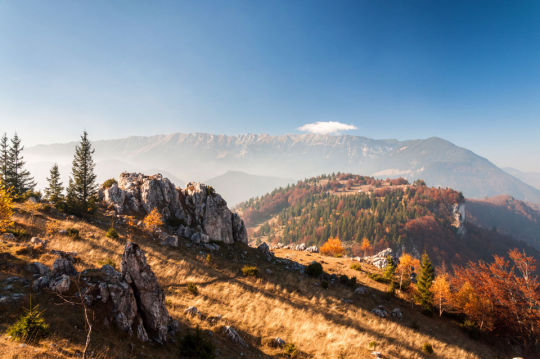
200 kilometers north of Bucharest in the Southern Carpathians is another interesting corner of Romania. The date of the formation of the protected area is considered to be 1938, which in 1990 became a national park. The total area of the reserve is 14,781 ha. Its karst landscape with the release of limestone rocks is distinguished by various representatives of the plant and animal world. Among 1170 species of vegetation, pine and willow, alder, hornbeam, and oaks are found.
48 species of members of the orchid family grow. Among the representatives of the living world of birds alone, there are 11 species. This is thrush, cuckoo, oriole, kayuki, golden eagle and many others. But there are only 3 species of fish: barbel, brook lamprey and sculpin. Walking routes are organized for any physical condition. They allow plenty to admire the beauties of Romanian nature: mountain gorges, valleys and glacial lakes.
Mountain range Rodna

Another Romanian mountain range near the Ukrainian border. It is formed by granites and crystalline rocks. Pyrite deposits were discovered here. On the territory of the massif is Rodna National Park with an area of 46599 ha. It was created in 2000 and represents a unique territory of glacial cracks and caves, valleys, forests and mountain pastures. Some of the inhabitants of the park are protected by law. Common mammals include brown bear, wolves, lynx, capercaillie and eagle.
Sarmizegetusa
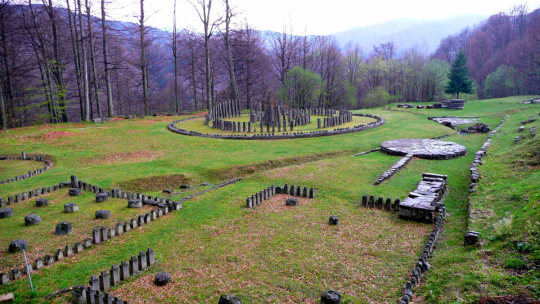
In the south-west of Transylvania was the territory of Dacia. The residence and its main military and political center was Sarmisegetusa, located on the hill of Gradistia-Munchelului. It received such an interesting name in honor of the ceasefire between the Sarma and Getae tribes. The last Dacian ruler Decebalus included it in his defensive system. It was destroyed by Roman troops during the campaigns. In 1999, the remains of Sarmizegetusa were included in the UNESCO World Heritage List.
The fortress was located at an altitude of 1200 meters above sea level, had a quadrangular shape and occupied 30,000 m². In addition to defensive significance, it was also a religious center, since it contained important shrines for the Dacians. It is assumed that the cave on Mount Kogayonon located here served as a shelter for the god Zalmoxis. At the top, several sacred shrines were discovered, the road to which is paved with tightly fitting parallelepiped stones. Ceramic pipes were laid into the houses located on the mountain terraces, through which water flowed. This led to the conclusion about the high culture of life of the Dacian tribes.
Vidraru Dam
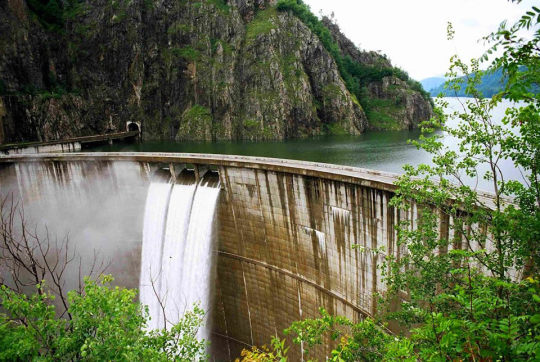
In 1961-66, a dam was built on the Arges River, flooding the village of Arges Arefu. The area of the artificial lake is 870 ha. It is the highest dam in Romania. It has a shape resembling a bow up to 167 meters high and 305 meters long. At the time of commissioning in the 60s of the XX century, the dam was considered the ninth largest in the world and the fifth in Europe. Currently, the dam is undergoing major repair and reconstruction work to modernize and strengthen existing facilities. An observation deck with the iron figure of Prometheus, which was previously allowed to climb the stone stairs, was built near the dam.
Currently, guards are working around the dam, as a large amount of explosives is located on the slopes of the mountains in case water breaks. In this case, it will be easier to create an artificial barrier to prevent the accident as soon as possible. Boat trips and bungee jumping, resembling a bungee, are organized around the reservoir.
Bucegi Sphinx

In the mountains of Bucegi, located in the center of the country, at an altitude of 2216 meters there is an interesting natural formation. It is very similar to the Egyptian sphinx. As a result of weathering of sandstone and calcareous rocks by winds, such a miracle formed in the Southern Carpathians. It is assumed that in this area was one of the centers of Atlantis, where there were landing sites of an alien civilization. In the city of Iasi, a clairvoyant lives, claiming that under the Sphinx there is a labyrinth that hides treasures with the knowledge of an ancient civilization that will be revealed to mankind when it is ready for this. The Bucegi Sphinx is listed as the country’s seven natural wonders.
Curtea Veke
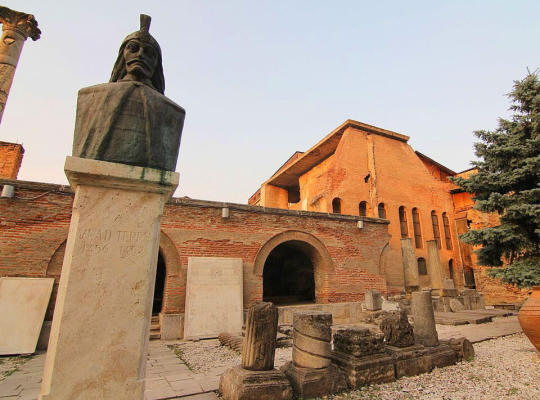
The Old Courtyard (rum. Curtea Veche – Old Courtyard), or the Princely Court (rum. Curtea Domnească din Bucureşti) is a complex of buildings designed to serve the Wallachian rulers. It was built in the second half of the 14th century by the ruler Mircea Sary. After his death was not used. In the XV century, Vlad Tepes decided to found the Dymbovitsa fortress on its ruins.
Laid on September 20, 1459 from stone, the fortress is considered the foundation of Budapest. After him, special attention was paid to the fortress after 1545 under Mircea Chobanul, who was laying the church of St. Anton (hramul Sf Anton) and the Annunciation (de Buna Vestire). Later, coronations of Romanian rulers were held in it. This is currently the oldest building in Bucharest.
The fires and natural disasters led to the desolation of the palace and the transfer of the government residence to another place, and this fortress was called the Old Courtyard. Currently, it is an open-air museum telling about the past of the Romanian capital. Here you can see the remains of the water supply system, murals and decorations of the building, fragments of the defensive fortifications and the gallery of the Court, as well as a Turkish bath built on its territory.
#Bran Castle#Canyon 7 stairs#Canyon Bicaz#Ceahlau#Corvin Castle#Fun cemetery#Laku - Roshu#Mogoshoyaya Palace#Mountain range Rodna#Mud Volcanoes#Nyametsky fortress#Peles Castle#Pelishor Castle#Piatra Craiului National Park#Poenari#Rasnov Fortress#Retezat National Park#Romanian Athenaeum#Sarmizegetusa#Scarisoara Cave#Sucevita Monastery#Throne fortress
0 notes
Photo

I did a Portrait of Mihai Viteazul “Michael the Brave was the Prince of Wallachia, Prince of Moldavia and de facto ruler of Transylvania. He is considered one of Romania's greatest national heroes. Michael was seen by 19th-century nationalists as the first author of Romanian unity. His rule over Wallachia began in the autumn of 1593.” I did this in Art studio pro on IpadPro. I have one of Vlat Tepes too, check it out here: https://www.instagram.com/p/BpJ6l8sDUdz/ #digitalportrait #digitalpainting #ipadproart #romanianartist #romanianart #romanianhistory #mihaiviteazul #istoriaromaniei #romania #digitalart #portraits https://www.instagram.com/p/B2JJHA0ohz_/?igshid=163ca4n4rvjok
#digitalportrait#digitalpainting#ipadproart#romanianartist#romanianart#romanianhistory#mihaiviteazul#istoriaromaniei#romania#digitalart#portraits
0 notes
Note
For historical figures you could draw Vlad Tepes, Mihai Viteazu(he united for the first time the 3 regions into a country for a short period in 1600) or Mihai I and he is still alive to this day ^_^ hope this helps.
i’ve already drawn ro with both vlad tepes (x) and mihai viteazul – twice for the latter, actually (x) (x). while i might consider drawing mihai i, i think i’ll stick to historical personas for now, particularly the lesser-known ones
edit: i actually drew another picture of ro with tepes way back when (x)
#my whole intention for this series is to avoid the association with vlad tepes and romania to go BEYOND just him#i've got my own list of people i wanna get through#but i will consider requests if i think i can make an interesting scene from it#drucarstairs#francofous' réponses#to be fair the vlad tepes picture is very old and could use a redraw but eh
14 notes
·
View notes
Text
New Post has been published on JurnalulBucurestiului.Ro
New Post has been published on http://bit.ly/2sooUgi
Buna Ziua Iasi : O firma abonata la contractele Consiliului Judetean...
O firma abonata la contractele Consiliului Judetean s-a ales cu sesizare penala pentru evaziune fiscala
Ciprian BOARU
• O societate cu sediul pe Lascar Catargi este anchetata de procurorii ieseni pentru evaziune fiscala • Prejudiciul este de 1,4 milioane lei • Firma a avut relatii contractuale la Consiliul Judetean Iasi, cand institutia era condusa de liberalul Cristian Adomnitei • Inspectorii fiscali au gasit si alte firme care au tras tepe • In primele patru luni ale anului, firmele din Iasi inregistreaza datorii la buget de peste 34 milioane de euro
Tot mai multe firme din Iasi ajung sa fie reclamate la Parchetul de pe langa Judecatoria Iasi, dupa ce inspectorii fiscali din cadrul Directiei Generale Regionale a Finantelor Publice (DGRFP) Iasi descopera abateri grave. Este si cazul societatii Geoproconsdro SRL, fiind trecuta pe lista evazionistilor cu un prejudiciu de 1,4 milioane lei.
Inspectorii nu sunt prea optimisti privind recuperarea prejudiciului, pentru ca nu au gasit bunuri ce pot fi executate. Controalele au fost realizate la inceputul acestui an. Pe lista firmelor evazioniste mai apar societatile Loial General SRL (firma de constructii din comuna Grajduri) – 6,8 milioane lei, Afrodita Dis SRL (comert de produse cosmetice prin Internet) – 3,32 milioane lei, Trans Imeceb SRL (firma din Valea Lupului cu obiect de activitate lucrari de pregatire a terenului ) – 2,1 milioane lei.
Reporterii BZI au incercat sa obtina un punct de vedere de la reprezentantii Geoproconsdro SRL, dar la numerele de contact acestia nu au putut fi gasiti.
Contracte pe timpul lui Adomnitei
Cand la conducerea Consiliului judetean Iasi se afla liberalul Cristian Adomnitei, ulterior judecat pentru fals intelectual si favorizarea faptuitorului, Geoproconsdro SRl a semnat o serie de contracte cu institutia ce vizau realizarea unor lucrari de reparatii la tamplaria de termopan.
Mai mult, societatea trebuia sa execute si lucrari de izolatie. In total, contractele au ajuns la 14 mii de lei. Atunci, societatea era administrata de Mihai Poelinca. La scurt timp, administrator a fost desemnat Gheorghita Drobota, obiectul de activitate fiind de lucrari de constructii a cladirilor rezidentiale si nerezidentiale.
Numai ca, in timpul ambilor admninistratori, societatea ar fi functionat cu un numar de zero angajati. Societatea are sediul pe strada Lascar Catargi nr.43, iar în 2015 a avut o cifra de afaceri de 758.764 lei, cu pierderi de 96.093 lei si datorii de 518.154 lei. Acum, administratorul firmei va trebui sa ofere explicatii procurorilor ieseni.
Datorii de 34 milioane de euro
Activitatea fiscala din cadrul Administratiei Judetene a Finantelor Publice (AJFP) Iasi arata ca in primele patru luni ale anului, societatile comerciale datoreaza la bugetul de stat suma de 154 milioane lei, aproximativ 34 milioane de euro. In perioada amintita, inspectorii au efectuat 585 de actiuni de control, din care 277 au fost inopinate.
„Selectia contribuabililor pentru inspectii fiscale generale s-a efectuat în urma unei analize de risc pe baza informatiilor detinute în bazele de date ale administratiilor financiare, care au avut în vedere aspecte cum sunt: TVA negativ fara optiune de rambursare, societati care au depasit plafonul legal de 65.000 euro si nu au fost înregistrate ca platitoare de TVA, societati care utilizeaza forta de munca fara forme legale, societati care desfasoara tranzactii cu contribuabili inactivi, societati care înregistreaza diferente la achizitii intracomunitare, cifra de afaceri mare, debite restante fata de bugetul general consolidat, depunerea cu întarziere a declaratiilor fiscale, pierderi înregistrate în ultimii cinci ani fiscali, societati neverificate în ultimii cinci ani, domenii de activitate ce prezinta risc”, au spus reprezentantii AJFP Iasi.
Pentru nereguli in activitatea fiscala, au fost aplicate si 12 amenzi contraventionale, in valoare de 26 mii lei.
#Afrodita Dis SRL#ajfp iasi#buna ziua iasi#dgrep#evaziune fiscala#Geoproconsdro SRl#IASI#Loial General SRL#Mihai Poelinca#O firma abonata la contractele Consiliului Judetean#Trans Imeceb SRL
0 notes
Audio
Hai sa-ti zic de Cosbuc, de-Octavian Goga, Titu Maiorescu, Kogalniceanu, Iorga, Regele Mihai,
Creanga, Slavici, Caragiale, Blaga, Toparceanu si Arghezi coane, Eminescu, Minulescu, Marin Sorescu,
Nichita Stanescu, Tutea, Enescu, Rebreanu, Preda, Iancu Jianu, Tonita si Vlaicu si Penes Curcanul,
Maria Tanase, Tepes si Lambru, Stefan cel Mare, Hagi, Doja si tactu', Horea, Closca, Crisan, eroi
care toti la un loc, au luptat pentru noi! !!
0 notes
Photo
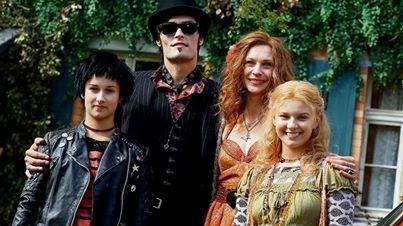
One of my favourite vampire families.
38 notes
·
View notes